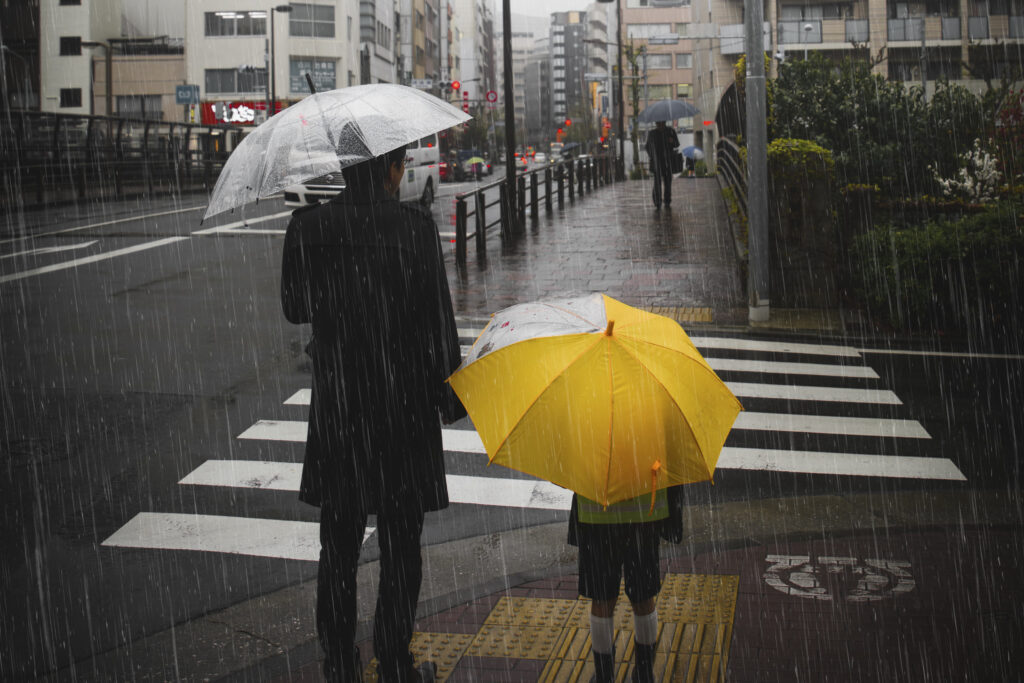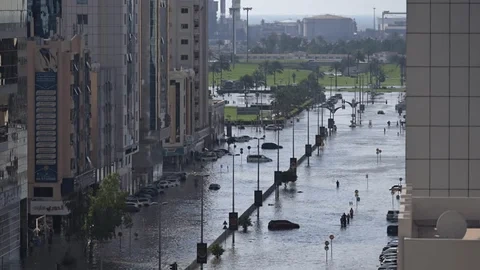September 11, 2025 | Abu Dhabi, UAE: Artificial intelligence is expanding its applications beyond traditional domains such as digital assistants and autonomous vehicles. During the UAE Climate Summit 2025, international experts examined the potential of AI in inducing rainfall through innovative technologies. The primary emphasis was on AI Rain Making Technology in UAE, which is currently utilized for weather forecasting, cloud seeding, and ensuring long-term water security.
The UAE is recognized as one of the aridest countries globally, experiencing an annual rainfall of less than 100 millimeters. In light of the increasing demand for water resources, the rapid growth of urban areas, and the intensification of water-related challenges due to climate change, the nation has allocated significant resources towards technology-oriented solutions. Cloud seeding has been a component of this strategy for more than twenty years, and the integration of AI rainmaking technology in UAE is now being pursued to enhance the effectiveness and accuracy of these initiatives.
AI in Forecasting and Cloud Seeding
Accurately predicting weather in desert regions has always been difficult. Traditional methods depend on satellite data, radar systems, and ground-based monitoring. These tools provide valuable information but often miss localized storm patterns or rapid atmospheric shifts. AI rain making technology in UAE is changing that by processing massive volumes of data in real time. By identifying trends in humidity, temperature, and pressure, AI models can forecast rainfall hours before it happens.

At the UAE climate summit 2025, researchers explained that these systems are not just global but adaptable to regional and local scales. They can highlight cloud systems most suitable for seeding, allowing for better planning of missions. Monica Youngman from the US National Weather Service noted that while AI rain making technology in UAE improves speed and accuracy, human oversight remains essential. Forecasting is still a science that requires expert judgment to validate machine results.
Cloud seeding itself has a long history in the UAE. The National Centre of Meteorology (NCM) has conducted thousands of missions since the 1990s, dispersing salt particles into clouds to trigger rainfall. Between January and July 2025 alone, 185 missions were carried out, including 39 in July. Annual operations involve more than 900 flight hours, costing about AED 29,000 (USD 8,000) per hour. Yet the investment pays off, as studies show seeding increases rainfall by up to 23 percent and provides 84 to 419 million cubic meters of usable water annually.
AI rain making technology in UAE is now being used to reduce wasted flights and increase effectiveness. Instead of targeting broad areas, algorithms analyze cloud formation and movement, guiding missions to the right place at the right time. This makes each mission more cost-effective and helps ensure water gains match investment levels.

The technology is not limited to aircraft. Drones are becoming an important part of the future of weather modification. Equipped with sensors and AI navigation systems, drones can reach cloud systems more quickly and at lower cost. They reduce environmental impact, eliminate risks for pilots, and allow more precise targeting of specific cloud clusters. The UAE Climate Summit 2025 emphasized that the UAE is actively testing drone fleets as a complement to, and eventual replacement for, traditional aircraft missions.
Opportunities and Challenges Ahead
The UAE’s leadership in AI rain making technology in UAE is supported by international partnerships. Through the International Rain Enhancement Forum, it has funded research projects worth millions of dollars. One study uses radar and satellite data to build predictive models that can anticipate cloud development six hours before rainfall. Another looks at how AI rain making technology in UAE can detect “gray swan” events—rare but high-impact storms that traditional models often underestimate.
These initiatives not only enhance the UAE’s water strategy but also offer solutions to other nations facing similar challenges. Countries in Africa, Asia, and the Middle East are closely observing these advances, viewing the UAE as a testing ground for innovation in weather control. The UAE Climate Summit 2025 made it clear that such international collaboration strengthens global resilience.

Still, challenges remain. Experts cautioned that AI rain making technology in UAE is not a magic solution. Cloud seeding only works on certain cumulus cloud types. If attempted under the wrong conditions, it can fail or even reduce rainfall. Costs also remain high, despite improvements in efficiency. Each mission involves aircraft maintenance, specialized equipment, trained crews, and fuel.
There are also public concerns. Some residents link cloud seeding with extreme weather events, though scientific studies show otherwise. The 2024 UAE floods, for instance, were found to be caused by climate change and rapid urbanization, not artificial rain efforts. AI rain making technology in UAE, researchers stressed the need for transparent communication to build public trust.
Climate change itself remains the larger issue. While AI rain making technology in UAE can add water resources, it cannot solve global warming, shifting rainfall patterns, or increasing extreme events. Experts pointed out that rainfall enhancement must work alongside desalination, water recycling, and conservation programs. Luca Delle Monache of the Scripps Institution said at the UAE Climate Summit 2025 that AI is a tool that improves precision, but it cannot replace the broader fight against climate change.
The UAE has responded by tightening oversight. All seeding missions are conducted under NCM supervision, with strict safety protocols. Officials have pledged that the integration of AI rain making technology in UAE will be carefully regulated, ensuring that algorithms are transparent, ethical, and environmentally safe.

What’s Next for UAE’s Weather Strategy
The UAE Climate Summit 2025 highlighted how AI rain making technology in UAE is moving from research labs into operational use. Smarter forecasting, more efficient seeding, and drone-based operations are now part of the country’s national strategy for water security.
In the coming years, experts expect:
- Wider deployment of AI rain making technology in UAE to cover the entire nation.
- Expansion of drone-based cloud seeding, reducing costs and risks.
- Increased international collaboration, sharing UAE’s innovations with water-stressed nations.
- Integration of AI into disaster management systems, improving responses to floods, droughts, and extreme weather.
The UAE’s investments show that innovation is central to its adaptation strategy. Yet UAE Climate summit 2025 speakers made it clear that technology is only part of the solution. Rainmaking programs must complement conservation, sustainable resource management, and international climate action.
By combining advanced technology with scientific oversight, the UAE continues to lead in weather modification. The country’s work with AI Rain Making Technology in UAE is being watched worldwide as other nations seek solutions to their own water challenges.
As the UAE Climate Summit 2025 concluded, one message stood out: artificial intelligence may help make it rain, but securing the future requires more than machines. It demands responsibility, cooperation, and long-term commitment to protecting the environment.
Also Read: Hafeet Rail Unveils High-Speed UAE to Oman Train Route















